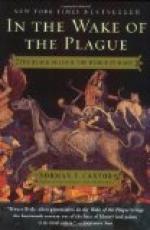in
Angling Songs, by Miss Stoddart, the poet’s
daughter (Blackwoods, Edinburgh, 1889). Mr. Stoddart
was born on St. Valentine’s Day 1810, in Argyll
Square, Edinburgh, nearly on the site of the Kirk
of Field, where Darnley was murdered. He came
of an old Border family. Miss Stoddart tells
a painful tale of an aged Miss Helen who burned family
papers because she thought she was bewitched by the
seals and decorated initials. Similar follies
are reported of a living old lady, on whose hearth,
after a night of destruction, was once found the impression
of a seal of Mary of Modena. I could give only
too good a guess at the
provenance of
those
papers, but nobody can interfere. Beyond 1500
the family memories rely on tradition. The ancestors
owned lands in the Forest of Ettrick, and Williamhope,
on the Tweed hard by Ashestiel. On the Glenkinnon
burn, celebrated by Scott, they hid the prophets of
the Covenant “by fifties in a cave.”
One Williamhope is said to have been out at Drumclog,
or, perhaps, Bothwell Brig. This laird, of enormous
strength, was called the Beetle of Yarrow, and was
a friend of Murray of Philiphaugh. His son, in
the Fifteen, was out on the Hanoverian side, which
was
not in favour with the author of
The
Death-Wake. He married a daughter of Veitch
of The Glen, now the property of Sir Charles Tennant.
In the next generation but one, the Stoddarts sold
their lands and took to commerce, while the poet’s
father won great distinction in the Navy. The
great-great-grandfather of the poet married a Miss
Muir of Anniston, the family called cousins (on which
side of the blanket I know not) with Robert II. of
Scotland, and, by another line, were as near as in
the sixth degree of James III.
As a schoolboy, Mr. Stoddart was always rhyming of
goblin, ghost, fairy, and all Sir Walter’s themes.
At Edinburgh University he was a pupil of Christopher
North (John Wilson), who pooh-poohed The Death-Wake
in Blackwood. He also knew Aytoun, Professor
Ferrier, De Quincey, Hartley Coleridge, and Hogg,
and was one of the first guests of Tibbie Sheils,
on the spit of land between St. Mary’s and the
Loch of the Lowes. In verses of this period (1827)
Miss Stoddart detects traces of Keats and Byron, but
the lines quoted are much better in technique
than Byron usually wrote.
The summer of 1830 Mr. Stoddart passed in Hogg’s
company on Yarrow, and early in 1831 he published
The Death-Wake. There is no trace of James
Hogg in the poem, which, to my mind, is perfectly original.
Wilson places it “between the weakest of Shelley
and the strongest of Barry Cornwall.” It
is really nothing but a breath of the spirit of romance,
touching an instrument not wholly out of tune, but
never to be touched again.
It is unnecessary to follow Mr. Stoddart through a
long and happy life of angling and of literary leisure.
He only blossomed once. His poem was plagiarised
and inserted in Graham’s Magazine, by
a person named Louis Fitzgerald Tasistro (vol. xx.).
Mr. Ingram, the biographer of Edgar Poe, observes
that Poe praised the piece while he was exposing Tasistro’s
“barefaced robbery.”




